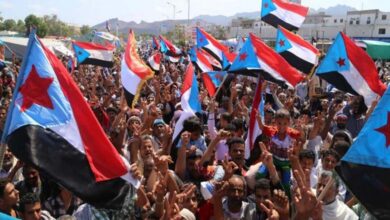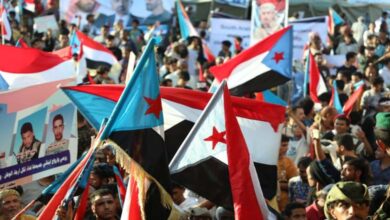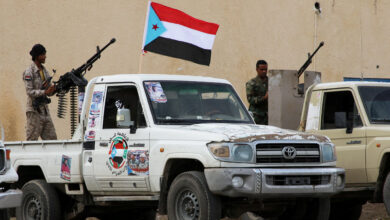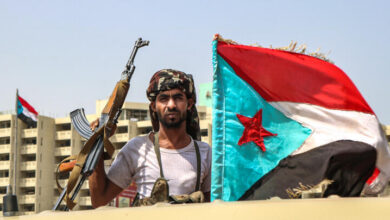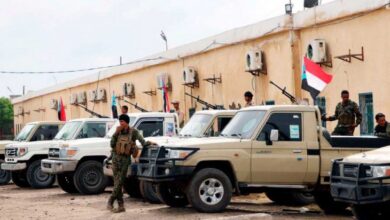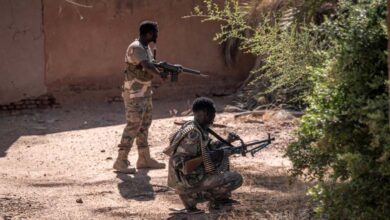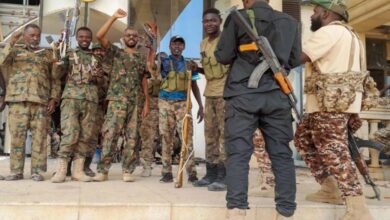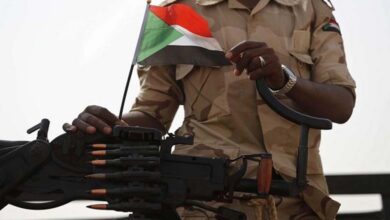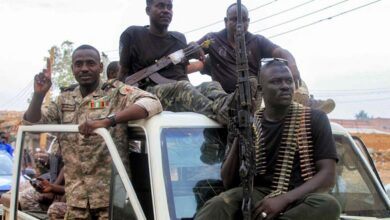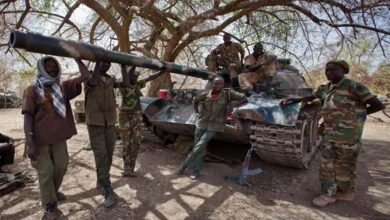Somalia’s Efforts with the Assistance of the United Arab Emirates in Combating Terrorism
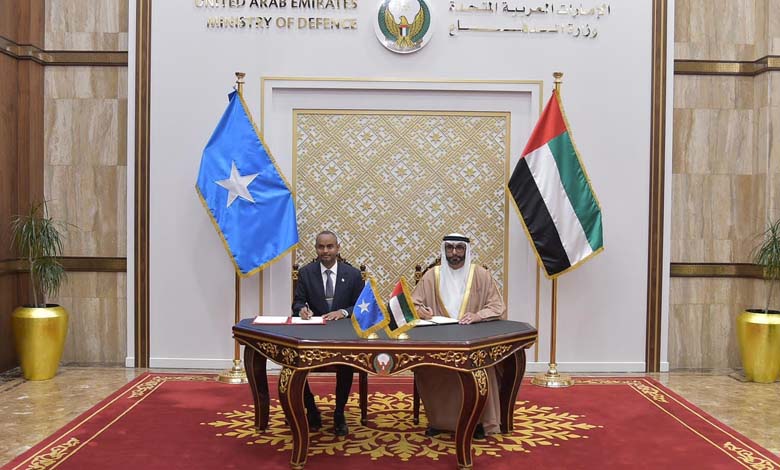
The Somali President Hassan Sheikh Mahmoud seeks to utilize various factors, including local consensus, his previous successes in combating terrorism in his country, his good external relations, and the redeployment of US forces in Somalia, in order to achieve rapid accomplishments in curtailing the activities of the Al-Shabaab militant movement, affiliated with Al-Qaeda, and restoring security and stability in the capital Mogadishu and other parts of the country. President Mahmoud‘s multi-faceted vision for combating the Al-Shabaab movement militarily, financially, and ideologically has thus far yielded tangible and encouraging results. If local and international efforts continue to converge at a faster pace, it could bring about qualitative progress in undermining the capabilities of the terrorist organization, containing it, and curbing its ambitions to expand in Somalia and the African Horn.
The paper aims to assess counter-terrorism efforts in Somalia and explore potential paths for the future of the “Al-Shabaab” movement, in light of operational changes and successes achieved against it, after six months of President Sheikh Mahmoud‘s tenure.
Updates on counter-terrorism efforts in Somalia:
- Governmental efforts:
Sheikh Mahmoud has embodied his slogan of “national reconciliation” in an effort to overcome political differences and achieve internal alignment in confronting the Al-Shabaab movement and overcoming security, economic, and humanitarian challenges. This was evident in the consultative meetings held by Somali leaders in the capital Mogadishu in June, September, and October 2022, which included important outcomes such as cooperation to address drought and famine, liberating towns and cities from the grip of Al-Shabaab to deliver humanitarian aid to drought-affected populations.
In a parallel direction, the Somali president has pursued a more flexible and balanced foreign policy that prioritizes his country’s interests and distances itself as much as possible from regional axis policies. In this context, he and his government have led an intense external diplomatic effort to address problems and improve relations with regional and international neighbors and friends to ensure external support, especially in drought relief and counter-terrorism. In addition to visits to three neighboring countries (Djibouti, Ethiopia, and Kenya), Mahmoud has visited almost all important regional and international countries active in his country, including the UAE and Turkey (the first two foreign stops for him), Eritrea (twice), the United States (twice), Tanzania, Egypt, Algeria, Saudi Arabia, and others. In addition to successfully fulfilling his commitments regarding the return of about 5,000 Somali soldiers from Eritrea, some of whom have already arrived, with the rest expected to arrive by late January next year. Somali diplomatic efforts have resulted in the signing of security and economic cooperation agreements, especially with countries in the Horn of Africa and East Africa, gaining more regional and international support, which has contributed to reinvigorating counter-terrorism efforts in this country.
On the battlefield, the Somali army, supported by local militias known as “the owners of the scarves” and African forces, has regained the initiative and shifted from defense to offense, launching intensive and coordinated military operations that have inflicted severe losses on Al-Shabaab, estimated at around 1800 killed (or one-fifth of its total fighters numbering around 9,000), and the arrest of 114 others. Its control and actual movements have also receded by about 15%, after controlling nearly half the country’s area before Mahmoud took office in May, where the movement lost more than 50 cities, towns, and villages, especially in the states of Galmudug, Hirshabelle, and the southwest, including its expulsion from strategic areas such as “Masjid Ali Jadud,” “Adam Yibale,” and “Bahadu,” and recently the town of “Run Nargood,” its last stronghold in the Middle Shabelle province of Hirshabelle state.
In parallel with the military war, the Somali government has waged an economic war to dry up the sources of funding for the youth; by criminalizing financial dealings with them, punishing traders and companies paying taxes to them, in addition to freezing dozens of bank accounts believed to belong to individuals and entities affiliated with the movement. Mogadishu recently hosted a conference to establish a mechanism to enhance financial oversight and prevent the flow of funds to the movement. According to local estimates, the movement lost about 30% of its revenues during just the months of September and October last year, due to military operations and government financial measures against it.
The government has also taken some policies and measures in the course of reforming religious discourse and stifling the ideological intellectual terrorism, including the appointment of the former leader of the Al-Shabaab movement, Mukhtar Robow, as Minister of Endowments and Religious Affairs, launching some television channels and media platforms to expose the ideology and behavior of terrorists, and closing dozens of news websites and hundreds of pages on social media platforms that promote their propaganda.
- International and Regional Supportive Efforts
United States: In recent months, the Biden administration has refocused on the security file and played the leading external role in the war on terror in Somalia, by working more closely with Somali forces and regional partners to pressure Al-Shabaab fighters. In addition to redeploying about 500 US troops in Somalia and training more Somali special forces known as “Danab,” the US Africa Command (AFRICOM) has provided air and intelligence support to the army and tribal forces in their ongoing military campaign against the movement (among other roles, such as coordination with Somali forces and African Union mission forces). Since Mahmoud‘s assumption of power, American drone strikes have significantly increased, with dozens of strikes targeting the movement’s strongholds, resulting in the elimination of around 100 terrorists, including the movement’s second-in-command Abdullah Ndeere, at the beginning of last October. In the context of undermining the financial influence of Al-Shabaab, the US Treasury imposed sanctions mid-month on 14 individuals in the movement, including leaders, along with a network of 9 individuals collaborating with them in purchasing weapons and raising funds.
United Arab Emirates: The UAE pushed forward a historic project to the Security Council, adopted mid-last year, on tolerance to address hate speech and extremism, during its membership in the international organization, translating its commitment through various forms of besieging terrorism, uprooting its discourse, and confronting its elements on the regional map.
African Union Mission in Somalia (AMISOM): It has announced more than once that it is part of the military operations that liberated some areas from Al-Shabaab. However, its role is still less effective and more defensive in nature than decisive offensive, as its participation is almost limited to battles close to its bases, prioritizing protecting vital sites such as government institutions, airports, ports, and major roads.
Somalia’s three neighbors (Ethiopia, Kenya, and Djibouti): They have moved to enhance military and security coordination and cooperation with Sheikh Mahmoud‘s government to confront the escalating threats of Al-Shabaab, especially after the attacks carried out by the movement in northeastern Kenya, and the execution of hundreds of its fighters making significant incursions (about 100 km) into Ethiopian territory, before being repelled and suffering around 800 casualties at the hands of the “Lew” police of the Ethiopian Somali region and Ethiopian defense forces, in late July last year. Both the Kenyan and Ethiopian armies have intensified their deployment along their borders with Somalia, with Kenyan and Ethiopian fighter jets conducting numerous airstrikes on the movement’s strongholds in the bordering regions of the two countries, especially in the regions of Hiiraan, Bakool, Gedo, and Central and Southern Somalia.
Other International Efforts: Regional entities, led by the African Peace and Security Council, have spearheaded efforts in the UN Security Council to lift the arms embargo imposed on Somalia. The European Union and Britain announced in July and August of last year additional financial assistance of €120 million and £2.3 million respectively to support the Somali army and the African Union mission in Somalia.
Prospects of the War on Terrorism and the Future of Al-Shabaab
In light of the above, three possible scenarios for counterterrorism efforts in Somalia and the future of Al-Shabaab can be envisioned as follows:
- Success of the government and its allies in inflicting further defeats on the movement and constraining it: The next phase may witness a new cycle of setback and weakening for Al-Shabaab similar to what occurred between 2011 and 2017. This requires continued and increased concerted efforts both locally and internationally to tighten the noose on the movement from all aspects, including undermining its financial, judicial, and security networks, destabilizing and weakening its internal cohesion, countering its ideological and militant creed, alongside subjecting it to extensive and coordinated military pressure that forces it to retreat and withdraw. This scenario is bolstered by the growing public resentment towards Al-Shabaab, the increasing strategic significance of Somalia for competing powers in the Horn of Africa, and the neighboring countries’ fear of the movement’s expansion into their territories, prompting them to further cooperate with the Somali government to constrain the movement and restore security and stability in the country.
- Shift of the war’s trajectory in favor of Al-Shabaab once again: There are still many motivating factors for the resurgence of terrorist activities in Somalia and the region, most of which represent serious challenges that cannot be overcome in a short period, particularly concerning the lack of readiness of the Somali army and security forces to assume the responsibility of imposing security and restoring stability in the country, especially in the absence of lifting the arms embargo on the Somali army, and the worsening economic and humanitarian crises due to the drought wave and famine, which burden the Somali government and people and are exploited by terrorist groups to solidify their presence and enhance their legitimacy.
- Diminishing momentum of the war on the movement and maintaining the status quo: This could be due to: the reduction of external support and the waning momentum of battles against the movement, given the high and discouraging cost of war for Somalia and its international partners, and the presence of more urgent priorities and concerns, primarily the famine crisis and the increasing internal displacement; the success of the movement in exhausting its adversaries and creating divisions within the tribes, turning them against each other instead of focusing on uniting their efforts to fight it; and the failure of the government to consolidate its control over liberated areas, deliver services and humanitarian aid to them, and protect citizens from the brutality of Al-Shabaab. This would lead to the movement’s resurgence to regain what it has lost, and the continuation of the “cat and mouse” war between the two sides.


